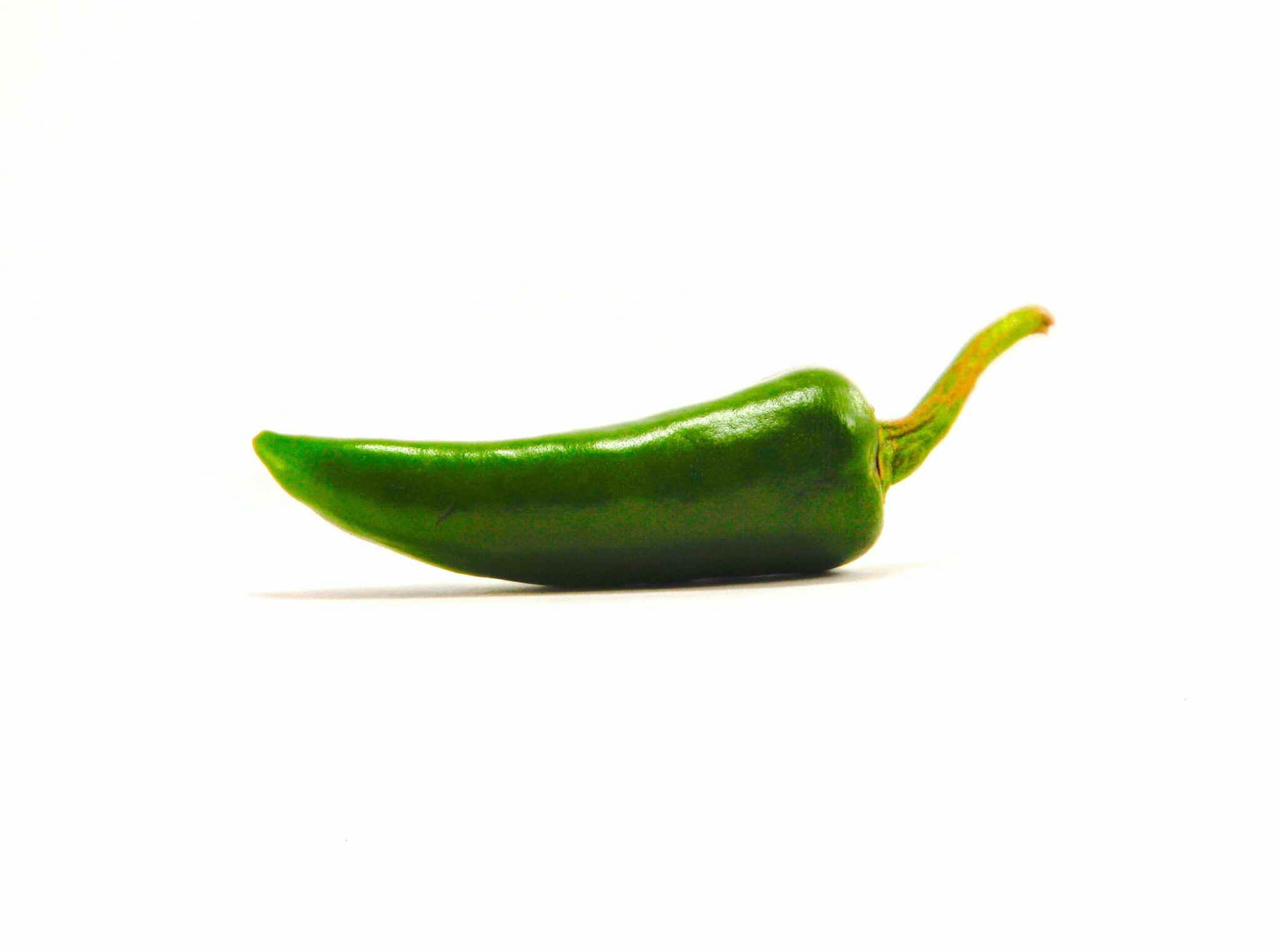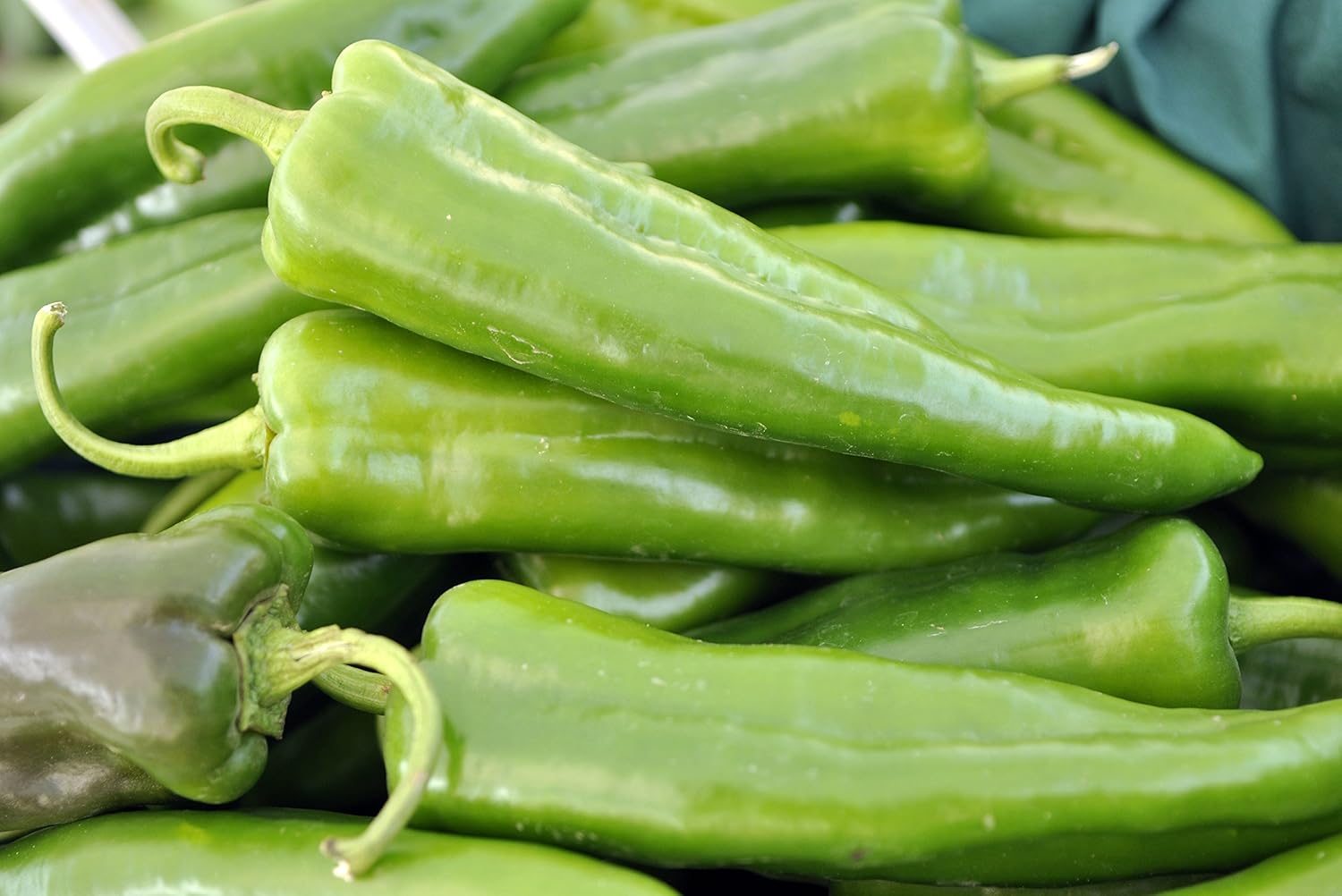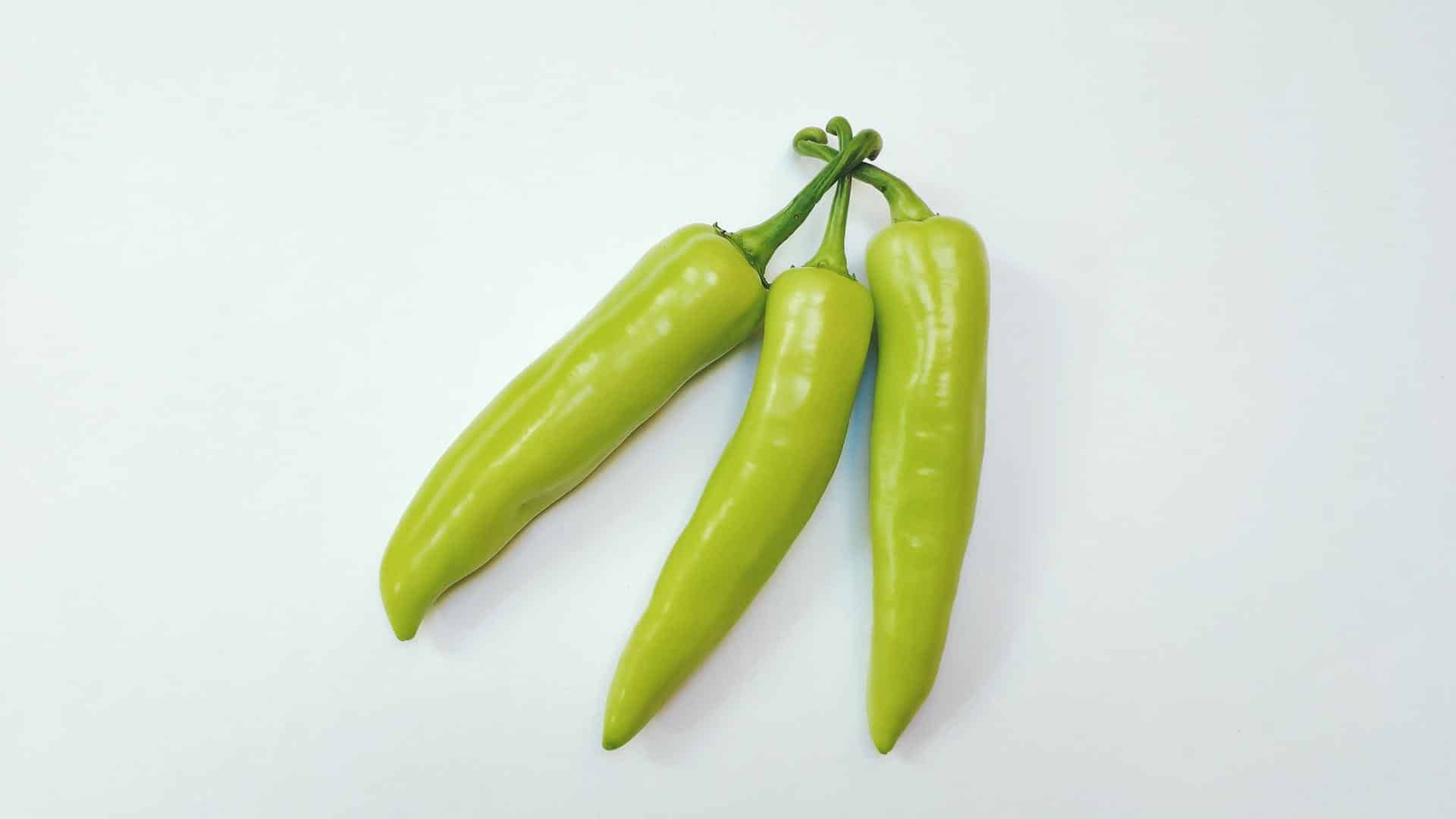If you don’t like the heat of chilli peppers, a banana pepper substitute is a great alternative. Long and slender, banana peppers range in hue from yellow to yellow-green. They’re mildly flavoured and can be eaten raw or pickled. Any dish that asks for a chile pepper can benefit from this replacement. Continue reading to find out more about this pepper. This replacement, sometimes known as the banana chile pepper, can be found in most grocery stores and is a wonderful choice if you want to reduce the intensity.

The banana pepper is a small, mild chilli with a tangy, slightly sweet flavour. It is not a hot pepper because it has no heat or only a little tickle. It is 5 times milder than the mildest jalapeno pepper, assuming it has any heat at all. The Banana Pepper, also known as the yellow wax pepper or banana chilli, has a mellow, sweet flavour that goes well with a variety of meals. It’s typically found on pizzas, Greek salads, sandwiches, and stuffed with meat and/or cheese.
What are banana peppers?
First and foremost, banana peppers do not taste like bananas. Their bright yellow colour and long, banana-like form give them their name. They’re also known as yellow wax peppers or banana chilis. They have a sweet, mellow flavour and are five times milder than a regular jalapeno. It’s a stretch to term these peppers “hot,” as their flavour is more of a mild tang. If you want to be more precise, banana peppers have roughly 500 scoville units (a jalapeno has between 2,500 and 8,000).
These peppers can be eaten raw or pickled, but you’ve probably only seen them pickled because that’s what’s frequently available. If you enjoy gardening, you can certainly produce your own banana peppers in your own backyard and eat them fresh, grilled, roasted, or pickled. You’ve probably had a pickled banana pepper if you’ve ever had banana peppers on pizzas, sandwiches, or salads.
What are some banana pepper alternatives?
-
Hungarian wax peppers

The banana pepper has a bad reputation for being spicy. Hungarian wax peppers are medium-hot chillies with a heat intensity comparable to that of banana pepper. They’re fantastic in salads and sandwiches, and they may also be used as a banana pepper alternative in dishes. Hungarian wax peppers have a mild and sweet early-season look, similar to pepperoncini.
This Hungarian chilli pepper was first brought to Central Europe in the mid-16th century. This pepper thrived in Central Europe’s chilly conditions and is regarded to be the first pepper used to make paprika. The word paprika comes from Hungary, despite the fact that many different peppers are utilized in its manufacturing. ‘Little pepper’ is how Hungarian wax pepper is translated. Unlike banana peppers, the Hungarian wax pepper has a distinct flavour and a gentle, pleasant burn.
Because its flesh is similar to that of banana pepper, but the rind is somewhat waxy and does not turn bitter, the Hungarian wax pepper is an ideal banana pepper replacement. This pepper may grow up to 6 inches long and is a fantastic alternative to banana peppers. The seeds of the Hungarian wax pepper are creamy golden and somewhat peppery. They can be hotter than a banana pepper when fully ripe.
Hungarian wax peppers are yellow in hue, similar to banana peppers. They turn red eventually, and you should taste them before using them. Although they have a similar flavour, Hungarian wax peppers are much hotter. Because of its mild-to-hot range, it can be used in meals with banana peppers without burning your tongue. Hungarian wax peppers can also be dried and used when they are not in season.
Hungarian wax peppers have a much spicier flavour than banana peppers. They have a similar form to banana peppers and are frequently confused. The Hungarian wax pepper grows wild in Hungary, thus they’re actually a hybrid. They may grow up to eight inches long and two inches thick, and as they mature, their heat intensity increases. Salsas, salads, and pickles all benefit from this pepper.
-
Hungarian chilli peppers

If you can’t tolerate the heat of banana peppers, Hungarian chilli peppers can be used instead. These peppers are softer than banana peppers, yet they still have a strong flavour. You can eat them fresh in salads or stews, or dry them and use them when they’re not in season. Here are some suggestions for utilizing them in place of banana peppers.
The Hungarian wax pepper resembles the banana pepper in appearance, but it has a considerably greater bite. Scoville Heat Units range between 5,000 and 10,000. It has a medium heat level, but you can always add more if desired. They’re great for everything from hot sauces to pickles. They’re also excellent banana pepper alternatives!
Hungarian chilli peppers are a good option for banana peppers if you’re not sure. They have a similar flavour and appearance but are a little milder. Slicing and storing Hungarian chilli peppers in a jar is the ideal way to utilize them as a banana pepper alternative. They’re also highly adaptable and lend a kick to foods. Just be careful when cooking with them and don’t be scared to try new things.
Hungarian chilli peppers have the same high fibre content as banana peppers, but they have a sweeter flavour. They’re also high in essential nutrients. A cup of Hungarian chilli peppers has more than 100 milligrammes of vitamin C, much exceeding the recommended daily amount for people.
The Scoville Scale rating for this medium Capsicum annuum variety is 1,000 to 15,000 units. Many supermarkets carry it, but true chilli connoisseurs prefer to cultivate their own.
The guero chile pepper is another choice for banana pepper substitutes. These peppers have a more complex flavour than the others, despite their identical shape. They have a little sweeter flavour than banana peppers and a milder heat than banana peppers. This pepper is also more adaptable and is becoming more widely available. If you don’t want to use a banana pepper, these are a great alternative.
-
Pepperoncini pepper

There are few pepper combinations that have as much in common as the pepperoncini and the banana pepper. They resemble each other. They share a similar taste and sweetness to each other. They also have a similar hue and appearance to bananas. The only difference is that the banana pepper can go from zero to 500 Scoville heat units, but the Italian pepperoncini hold its head above water just a little longer (100 to 500 SHU).
Best of all, pepperoncini are just as ubiquitous on store shelves, both pickled in jars and even in the refrigerated vegetable aisles at the select well-stocked grocery or specialized stores. When you need a banana pepper alternative, this is the logical solution. Pepperoncini peppers are native to Italy and Greece, but their popularity has grown worldwide. They are also known as Tuscan peppers, sweet Italian peppers, or golden Greek peppers in the United States.
The peppers have a sweet and mild flavour and are not particularly hot, though they can range from mild to medium in intensity. You’ve probably seen pickled pepperoncini on an antipasto platter, in an Italian salad, or on a pizza or sub sandwich somewhere.
-
Anaheim pepper

They resemble Hatch chilli peppers in appearance. In truth, the two peppers were once the same. They taste slightly different because one is grown in California and the other in New Mexico. The temperature, soil, and climate of the two locations vary, resulting in flavour differences in the peppers.
An Anaheim pepper is a medium-sized pepper that is six to ten inches in length. When they are still green, they are commonly used in cooking. They’re known by several names, including New Mexico peppers, California chilli, and Magdalena. The peppers will continue to ripen to a red colour if left on the plant. California red chiles, or chilli Colorado, are common names for red Anaheim peppers. Anaheim peppers are named after the city of Anaheim in California. They arrived in California via New Mexico, thanks to farmer Emilio Ortego (of Mexican food fame!). On the Scoville Scale, they range from 500 to 1,000 SHU. For comparison, bell peppers have no heat, whereas jalapenos have up to 8,000 SHU.
The heat intensity, on the other hand, varies depending on where they are cultivated. The peppers planted in California aren’t quite as hot as those grown in New Mexico. An Anaheim pepper’s flavour is described as smoky, sweet, and tangy. It has a slight spiciness, but not the kind that lingers like in hot peppers.
In what recipes can banana peppers be used?
Banana peppers are really popular. They’re simple to grow, and the plants are usually very productive, yielding a large number of peppers. You can cut and sauté them as part of your mirepoix, add them to salsas, toss them into salads, or pickle them.
You can also make stuffed banana peppers, which is one of my favourite dishes. Banana peppers are fantastic for stuffing. They’re just the right size to hold whatever stuffing you want. Although the pepper walls aren’t particularly thick, they provide a delicious bite when eaten fresh and soften wonderfully after cooking. They’re typically found on pizza, in Greek salads, on sandwiches, and stuffed with meat and/or cheese, which is one of my favourites uses.
-
Banana peppers pickled
Although raw banana peppers are delicious, many people prefer to pickle them, especially when they have a surplus. Fortunately, pickling them is a breeze.
White vinegar, apple cider vinegar, sugar, mustard seed, celery seed, and around a pound of banana peppers are all you’ll need. Two pints may be preserved in less than 30 minutes, and pickling them plays to their strengths.
-
Banana peppers with stuffing
You’ve definitely heard of stuffed peppers like chile rellenos, cheese-filled jalapeno poppers, and stuffed bell peppers, but did you know you can stuff banana peppers as well? You certainly can. Their distinct, acidic flavour pairs well with loaded munchies, and they take less than 30 minutes to prepare and cook.
-
Banana peppers with buffalo chicken
This is merely another way to prepare stuffed banana peppers. You’ll stuff them with chopped chicken, cream cheese, parmesan, hot wing sauce, and salt this time. You can also top each one with extra hot wing sauce if desired.
-
Bacon-wrapped banana peppers stuffed with sweet potato
I’ll admit that I had to coerce myself into trying this stuffed pepper type. I couldn’t see banana peppers and sweet potatoes working together. However, once I tried it, I was pleasantly delighted. The sweet-and-sour flavour of the peppers isn’t as strong as you might assume when paired with sweet potatoes.
-
Roast beef with pulled banana peppers in the slow cooker
Try this slow cooker pulled banana pepper roast beef recipe if you want to treat yourself or impress your visitors. It’s succulent, delicious, and melt-in-your-mouth tender. This dish’s seasonings and add-ins are also spot-on. Green chiles, bell peppers, banana peppers, and onions are among the ingredients in the pot.
Do banana peppers taste like Bell peppers?
If you want to try a banana pepper, you’ll most likely do it with the pickled kind that you’ll find in stores and restaurants. These banana peppers have a sweet, salty, tangy, and spicy flavour profile. Unless you deliberately choose hot banana peppers, they aren’t overly spicy when purchased in a jar.
It has a pickled pepper flavour to it. It is, after all, a pickled pepper! Even after being pickled, they retain a crisp feel comparable to fresh pepper. They’re ideal for adding flavour and texture to salads and sandwiches because of this. Banana peppers are somewhat spicy, sweet, and tangy, and can be cooked in the same way as bell peppers. However, there are sweet and spicy variations, with the spicy ones being the most potent.
Are banana peppers the same as pepperoncini peppers?
Pickled banana peppers and pepperoncini are sometimes confused, although they are not the same. They do, however, belong to the same pepper family: capsicum annuum. In terms of heat, they both fall into the same mild range of 100 to 500 scoville units, while some banana peppers may be completely devoid of heat. This is not the case with pepperoncini, as each of these peppers has a distinct flavour.
When it comes to flavour, they’re very similar, albeit pepperoncini has a small harshness to it that banana peppers don’t have. When the peppers are raw, the distinctions in flavour are more noticeable; once pickled, they taste even more alike. These two peppers have similar flavours and can be used interchangeably.
Pepperoncini peppers are slightly more green in colour and have a wrinkled texture than banana peppers, which have a brighter yellow hue and smooth skin, which is likely the reason for misconception. The pointier end of a banana pepper differs from the rounded end of pepperoncini.
What are some of the health benefits of banana peppers?
Despite eating low in calories, banana peppers are satisfying due to their high fibre content. Banana peppers also contain a wealth of essential elements, including many vitamins and minerals. Here are a few of banana peppers’ most significant health benefits:
-
Blood pressure control
A one-cup portion of banana pepper has 103 milligrammes of vitamin C, which is far more than the daily recommended amount. According to a preliminary study, vitamin C may help to manage blood pressure.
-
Improved Brain function
One cup of banana pepper contains approximately half of your daily vitamin B6 requirement. Vitamin B6 aids in the production of dopamine and serotonin, which affect everything from motivation to body communication. By getting enough B6, you can reduce your risk of sleep problems, mood changes, and other issues.
-
Combats obesity
Capsaicin is a chemical found in banana peppers. Capsaicin is the molecule that gives peppers their heat, but it may also help with obesity and other health problems. Capsaicin may assist enhance the body’s metabolism and reduce the buildup of body fat, according to research.
-
Better digestion
Banana peppers contain capsaicin, which can aid digestion, enhance metabolism, and even protect against stomach ulcers. Their high fibre content may also aid in the prevention or treatment of constipation and other digestive issues.
Conclusion
Because of its particular flavour, banana pepper is an essential component utilized by cooks in their daily cooking. It’s commonly used to provide the kick and that much-needed spicy taste to salsa, pizza, salads, sandwiches, and even meat and cheese-loaded tortillas.
This pepper is sometimes likened to pepperoncini, a chilli pepper variant belonging to the same Capsicum Annum species. With a heat range of 0 to 500 SHU, this pepper is less spicy than pepperoncini (Scoville Heat Units). In addition, banana pepper adds a tangy crunch, somewhat sweet flavour, and mild spicy kick to tacos, pizza, sandwiches, and other dishes.
